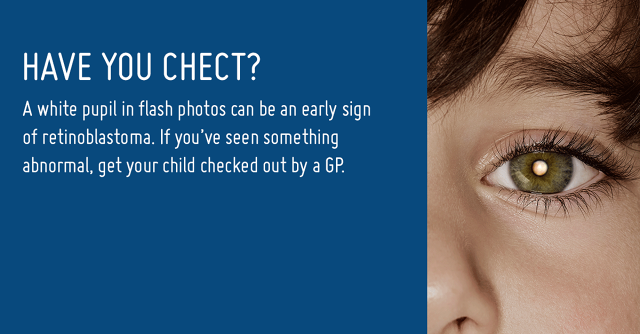Anatomy Of A Cannes Contender: How A Poster was Made right into a most cancers-Detection device
Wunderman UK CEO Chris Perry explains how a poster and ubiquitous cellphones brought up to a cancer-detection mechanism.
June 22, 2015
Retinoblastoma (RB) is an eye fixed most cancers in kids. it is a lethal, fast-growing illness, making early detection vital. British charity the Childhood Eye cancer belief (CHECT) and agency Wunderman created an revolutionary, available, means for parents to search for signs of the cancer of their youngsters, launching posters that react the same approach to flash pictures as a cancerous eye.
The commercials exhibit a picture of a kid’s eye, however the scholar in the image was once lined with an ink that reacts to digital camera flashes and turns white—mirroring how a cancerous eye reacts to photography.
four posters, which characteristic photography of kids who have survived RB, seemed in GP surgeries, child clinics and childcare centers, supported by means of a web based movie and social media marketing campaign to lift each consciousness and money.
The posters encouraged fast motion prompting our target market to photograph the poster after which their youngster to test for equivalent signs. Their placement encouraged the next motion: having children checked by using a physician in the event that they confirmed a white scholar. cellular equipped the thread linking all name to actions—from seeing signs to sharing the news by the use of social.
here, Wunderman UK CEO Chris Perry takes us through the key tiers in the creation of a easy, but powerful thought (and a certain winner in the out of doors and cellular categories at Cannes).
Co.Create: What used to be the brief?
Perry: CHECT is a small charity with a community round it of people affected by RB somehow. As a situation, RB is just not neatly-recognized—even by way of GPs. They asked us to assist elevate consciousness and elevate donations.
What insight led to the successful concept?
the speculation for the flash photo poster got here out of a joint immersion strategy we ran with the client during which we put strategists, creatives, technologists and shopper representatives collectively in opposition to the transient to iterate quickly—a technique of working that’s at all times interesting and can sometimes be profound.
The remark that a watch with this deadly cancer appears commonplace however appears white as a pupil in flash pictures had been made via the carer of a kid with RB within the CHECT neighborhood.
on condition that we take images with our smartphones more than the rest, it way we stock the important thing device for RB detection with us, all day, daily. With zero price range, our challenge was once to boost awareness of this awesome perception, provoke an motion, and lift the charity’s profile.

What key selections were made within the ingenious and manufacturing course of that made this idea stand out?
we would have liked to get the campaign in the market simply and with little or no funding, so we considering Twitter, facebook, You Tube, social communities, and press.
We set out to reach people who have or care for little toddlers and infants each day—parents, caregivers pals, as well as medical doctors and nurses. they bring about their cellphones with them in every single place they go, and so they constantly take satisfied snaps of the youngsters they handle, which supposed they were easiest-positioned to look the early indicators. What’s more, within the hobby of saving youngsters’s lives, they were the people who wanted to hear our message essentially the most.
to keep things easy, we utilized current smartphone performance to simulate eye-most cancers detection without the need to install an app or be online. mobile-activated posters asked folks to take a flash photo with their smartphone to see what eye most cancers looks as if.
the infant’s eye appeared customary on the poster, but an progressive, highly reflective ink made the pupil white within the photograph. It took six months creating this to make sure now not simply that the posters would work with any roughly camera with a flash, however that the reflective ink we selected to use would produce the proper of shiny white.
after all, the team opted for an ink containing small, reflective metallic flakes which displays white when a camera’s flash hits it.

How a success was this?
The campaign used to be picked up in mainstream, clinical, tech, and parenting press—spreading our message to over 70 million people.
It also acquired 81.8k shares on fb and 122k shares on Twitter. Our online video garnered over 900,000 views, without any paid seeding. And one in all our proudest achievements has been the world reach of the campaign.
It has generated views throughout all major continents, and precipitated like-minded charities to get involved and ask to run the marketing campaign themselves, carving out a spot for CHECT as a world-leading charity for retinoblastoma, as well as constructing and prolonging relationships with a global network.
What’s the enormous lesson for entrepreneurs from this success?
How a easy thought can spread across the globe thru social channels and make a huge difference.
(134)














